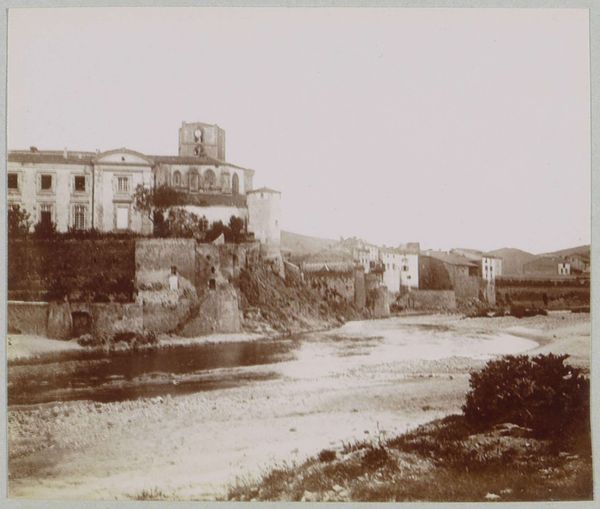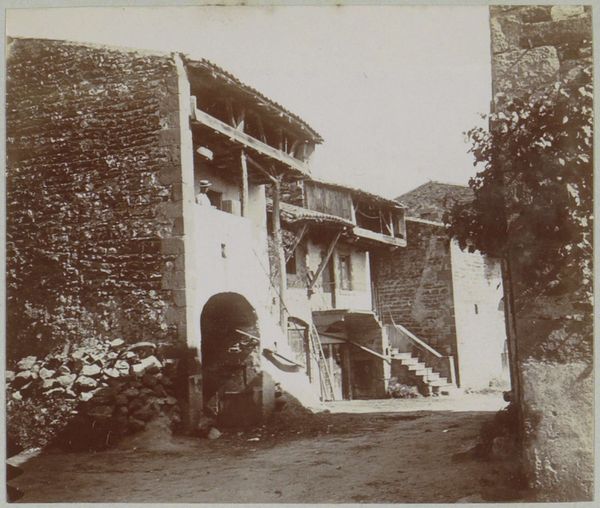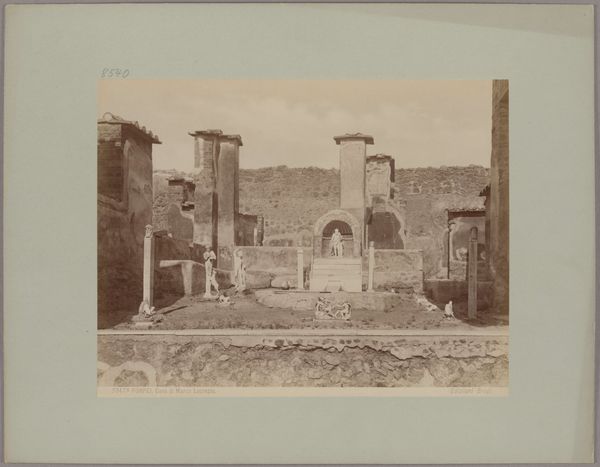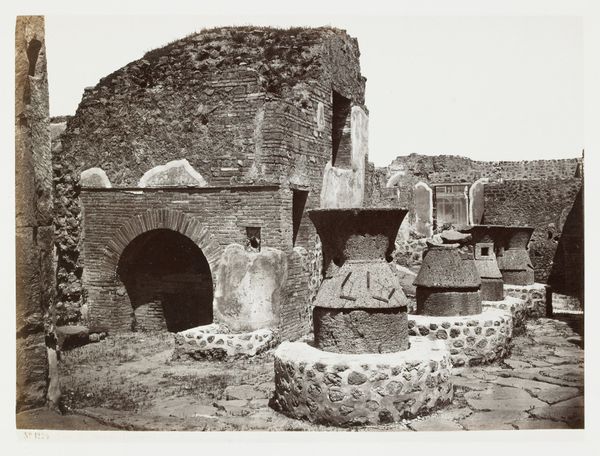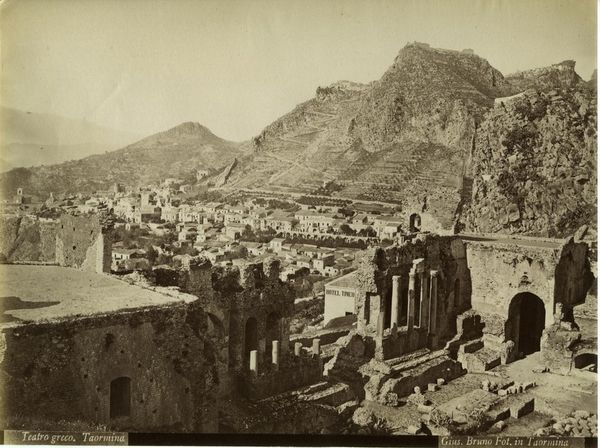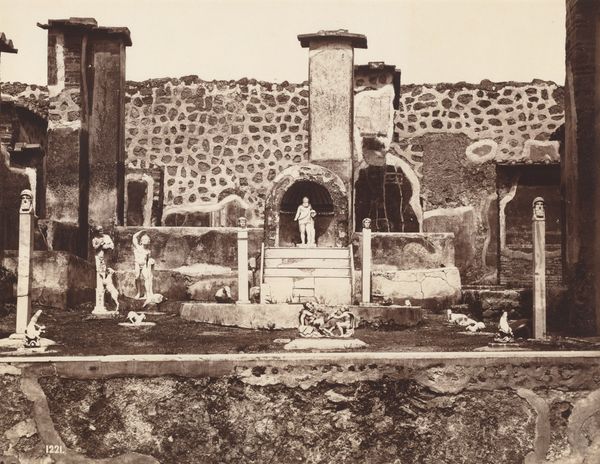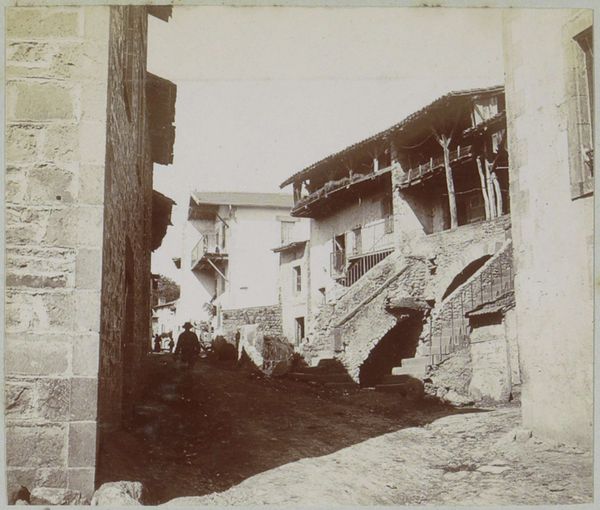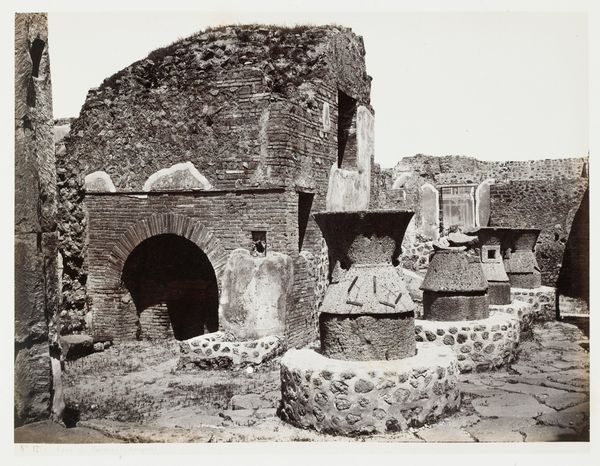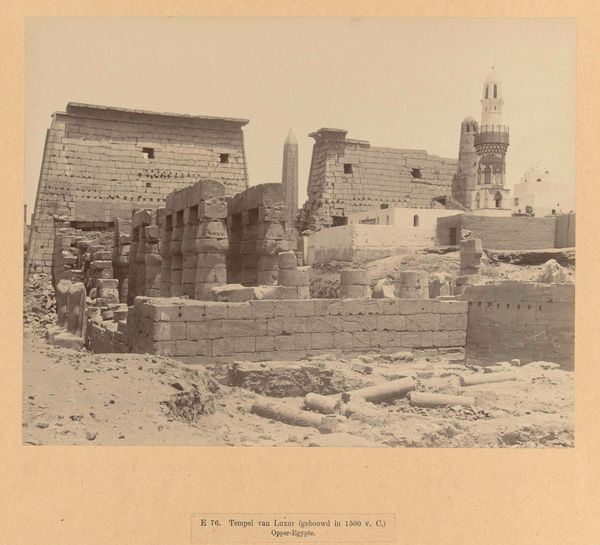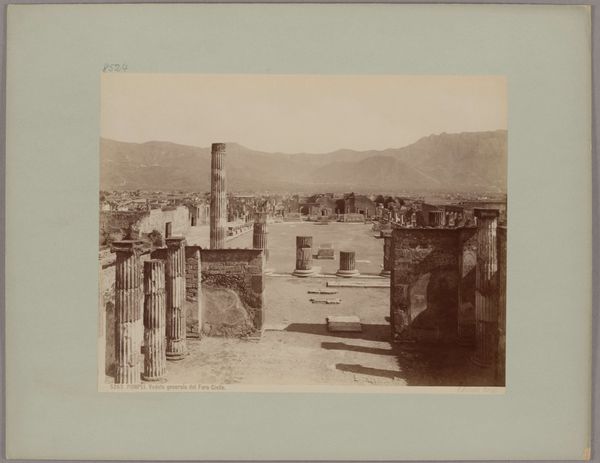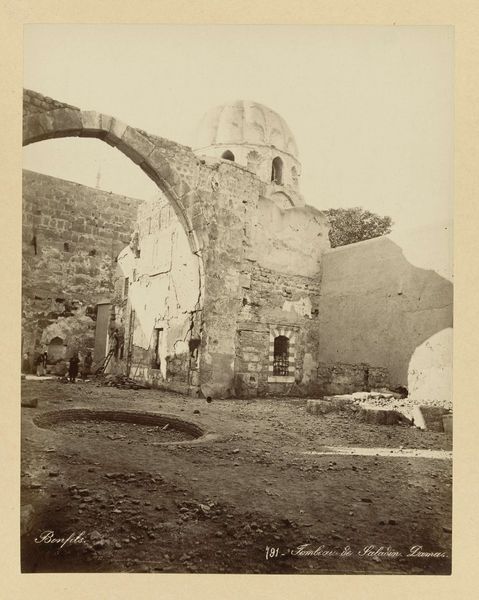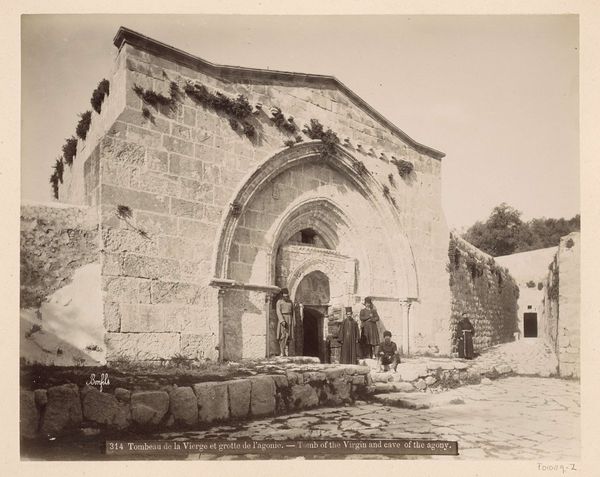
Ommuurde hof in Perzië met een vijver, torens en op de voorgrond kinderen c. 1880 - 1895
0:00
0:00
print, photography, albumen-print
#
portrait
# print
#
landscape
#
archive photography
#
photography
#
historical photography
#
orientalism
#
19th century
#
islamic-art
#
albumen-print
Dimensions: height 156 mm, width 232 mm
Copyright: Rijks Museum: Open Domain
Antoine Sevruguin created this photograph of a walled garden in Persia, some time in the late 19th or early 20th century. Its formal qualities – the symmetry of the composition and the stillness of the figures – evoke a sense of timelessness and order. But how might we connect these elements to the photograph's wider social and cultural context? Consider, for instance, the way the image creates meaning through visual codes. The walled garden, with its towers and pool, speaks to a tradition of Persian garden design as a symbol of paradise and power. Yet, the children in the foreground introduce a note of everyday life, a human presence that contrasts with the grandeur of the architecture. This image was made during a period of increasing Western influence in Persia. Sevruguin, himself of mixed Russian, Georgian, and Persian heritage, operated a commercial photography studio that catered to European tourists and elites. To understand this image better, you could consult historical archives, travel accounts, and studies of Persian garden design. By exploring the image’s history, we see that the meaning of art is contingent on social and institutional context.
Comments
No comments
Be the first to comment and join the conversation on the ultimate creative platform.
